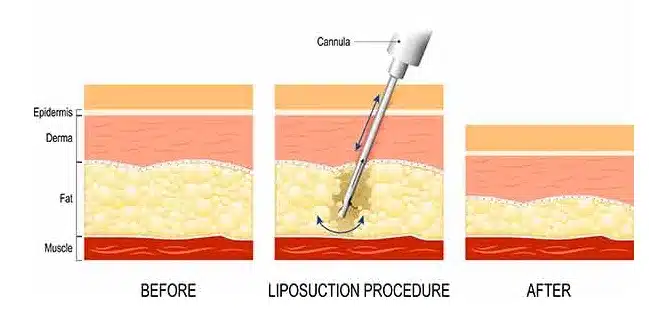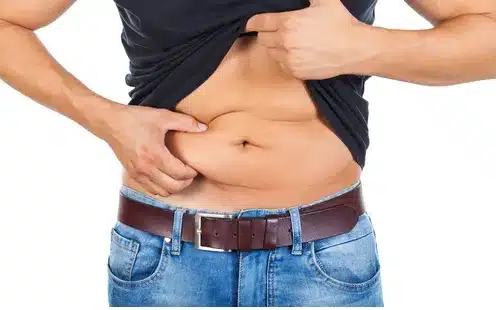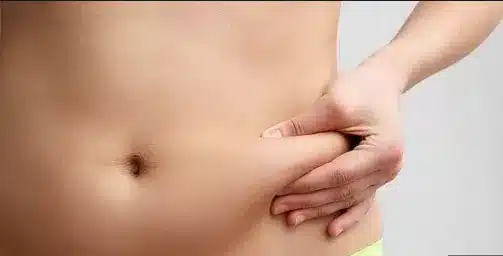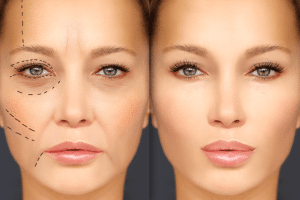Lipomatic surgery, also known as liposculpture or liposuction, is a specialized cosmetic procedure aimed at body contouring by removing excess fat deposits. This minimally invasive surgical technique is designed to reshape and refine specific areas of the body to achieve a more sculpted and toned appearance. Lipomatic surgery offers patients a targeted approach to fat reduction, enhancing body contours and improving overall aesthetic proportions.
Types of Lipomatic Surgery
Lipomatic surgery, or liposculpture or liposuction, is a cosmetic procedure that has gained significant popularity in recent years. This innovative technique allows individuals to achieve a more refined and contoured body shape by removing excess fat deposits from specific areas. This article will explore the different types of lipomatic surgery, the process involved, the ideal candidates for the procedure, and its potential benefits.
Several variations of lipomatic surgery cater to different patient needs and goals. The most commonly performed types include:
The recovery time after waist and back lipomatic can vary from person to person. Generally, patients can expect to resume normal daily activities within a few days, but swelling and bruising may take a few weeks to subside entirely.
- Tumescent Liposuction: This technique involves injecting a large volume of a specialized solution, known as tumescent fluid, into the targeted areas. The fluid helps to numb the area, constrict blood vessels, and facilitate the removal of fat cells.
- Power-Assisted Liposuction (PAL): PAL utilizes a vibrating cannula, a thin tube-like instrument, to break down fat deposits, making it easier for the surgeon to remove them. The vibrations reduce trauma to the surrounding tissues, resulting in reduced swelling and faster recovery times.
- Ultrasound-Assisted Liposuction (UAL): UAL employs ultrasonic waves to liquefy fat cells, allowing easier removal. This technique is particularly effective for fibrous areas such as the back, male breasts, and areas previously treated with liposuction.
- Laser-Assisted Liposuction (LAL): LAL employs laser energy to liquefy fat cells, making them easier to remove. This method also promotes skin tightening, making it suitable for individuals with mild to moderate skin laxity.
Clinic contact number: +989371200167
The Process of Lipomatic Surgery
Lipomatic is typically performed outpatient under general or local anesthesia with sedation. The following steps are involved in the procedure:
Initial Consultation:
- Purpose: The initial consultation is crucial for assessing your candidacy for Lipomatic surgery and discussing your goals.
- Details: Your surgeon will evaluate your medical history, examine the treatment areas, and explain the Lipomatic procedure, including potential risks and benefits.
Preoperative Preparation
- Medical Assessment: Before the surgery, you may undergo certain medical tests and evaluations to ensure you’re fit for the procedure.
- Instructions: Your surgeon will provide specific instructions to follow before surgery, such as avoiding certain medications and fasting prior to the procedure.
Anesthesia Administration
- Local Anesthesia: In most cases, Lipomatic surgery is performed under local anesthesia to numb the treatment areas.
- Sedation (Optional): Depending on the extent of the procedure and patient preference, sedation may also be used for relaxation.
Lipomatic Procedure Steps
Tumescent Solution Injection
- The surgeon injects a tumescent solution into the targeted areas. This solution contains a mixture of saline, lidocaine (local anesthetic), and epinephrine (to minimize bleeding).
Liposuction with Lipomatic
- The Lipomatic device, which uses mechanical vibrations, is inserted through small incisions into the treatment areas.
- The vibrations help break down and liquefy fat cells, making them easier to suction out.
Fat Removal
- The liquefied fat is suctioned out using a cannula attached to the Lipomatic device.
- The surgeon sculpts and contours the treated areas to achieve desired aesthetic outcomes.
Postoperative Care
- Bandaging: After the procedure, the treated areas may be bandaged to minimize swelling and support healing.
- Compression Garments: You may be instructed to wear compression garments to reduce swelling and promote skin contraction.
Recovery and Follow-Up
- Monitoring: Your surgeon will monitor your recovery progress and provide instructions for postoperative care, including activity restrictions and medication use.
- Follow-Up Visits: Scheduled follow-up appointments will allow your surgeon to assess healing and address any concerns.
Results and Maintenance
-
- Initial Results: You’ll start to notice improvements in body contour as swelling subsides over the following weeks.
- Maintenance: To maintain results, it’s essential to follow a healthy lifestyle with regular exercise and a balanced diet.
Clinic contact number: +989371200167
What is involved in lipomatic surgery
Waist lipomatic is a specialized surgical procedure designed to contour and sculpt the waistline by removing excess fat deposits. This innovative technique offers individuals a targeted approach to achieving their desired waistline shape and enhancing their overall body proportions. With advanced liposuction technology, waist lipomatic can provide precise and effective results with minimal scarring and downtime.
Lipomatic surgery, as a method of fat removal and body contouring, does not inherently come in “different types” in the same way that broad categories of surgery might. Instead, the technique itself is highly specialized and consistent in its approach, utilizing vibrational energy to emulsify fat before it is removed from the body.
Lipomatic surgery utilizes various techniques to remove excess fat and sculpt the body. The specific technique depends on the surgeon’s preference and the patient’s needs. Here are some commonly used techniques in lipomatic :
- Traditional Liposuction: Traditional liposuction involves making small incisions near the treatment area and using a cannula (a thin tube) to break up and suction out the fat deposits manually. This technique requires the surgeon’s physical exertion to perform the procedure.
- Power-Assisted Liposuction (PAL): PAL employs a vibrating cannula that oscillates rapidly, aiding in fat cell breakdown and facilitating removal. The mechanical vibrations reduce the effort required by the surgeon, making the procedure less physically demanding.
- Ultrasound-Assisted Liposuction (UAL): UAL employs ultrasonic energy to liquefy the fat cells before suctioning them out. The surgeon inserts a specialized cannula that emits ultrasonic waves, breaking down the fat deposits. This technique is particularly effective for areas with denser fat or fibrous tissues.
- Laser-Assisted Liposuction (LAL): LAL utilizes laser energy to liquefy the fat cells, making them easier to remove. The laser is delivered through a fiber-optic cannula, which helps break down the fat deposits while promoting skin tightening. LAL is often used for delicate areas and can help improve overall skin texture and firmness.

The process involved in lipomatic surgery begins with making small incisions near the targeted areas, followed by injecting a tumescent fluid to numb the area and facilitate fat removal.
Benefits of Lipomatic Surgery
Lipomatic surgery offers several benefits to individuals looking to reshape their bodies and improve their overall appearance. Some of the key advantages include:
- Enhanced Body Contour: Lipomatic effectively targets and removes stubborn fat deposits, resulting in improved body proportions and a more sculpted physique.
- Minimal Scarring: The small incisions made during lipomatic are carefully placed and typically result in minimal scarring, which fades over time.
- Boost in Confidence: Individuals often experience increased self-confidence and a more positive body image by achieving their desired body shape.
Ideal Candidates for Lipomatic Surgery
Lipomatic surgery is suitable for individuals who meet specific criteria. The ideal candidates:
- Have localized fat deposits that are resistant to diet and exercise
- Are in good overall health, both physically and mentally
- Have realistic expectations about the outcomes of the procedure
- Maintain a stable weight and healthy lifestyle
Popular Lipomatic Target Areas
One of the most popular target areas for lipomatic is the abdomen, where excess fat often accumulates and can be challenging to eliminate through traditional means. The procedure can effectively sculpt and define the abdominal area, resulting in a flatter, more toned appearance.
Lipedema surgery safely removes the excess fat while protecting the important lymphatic channels to prevent the possibility of lymphedema. DR Marcia Byrd
Age Limitations for Lipomatic Surgery
Lipomatic surgery’s suitability is determined individually rather than in a specific age range. Generally, individuals must be at least 18 years old to undergo the procedure. However, the decision to proceed with lipomatic is primarily based on the patient’s overall health, body composition, and goals rather than age alone.
Clinic contact number: +989371200167
Lipomatic Surgery Trends
Lipomatic surgery, a revolutionary technique in body contouring, has been advanced by renowned experts and institutions in the field of plastic surgery. Pioneers like Dr. Yves-Gerard Illouz, who developed the concept of liposuction in the late 1970s, laid the groundwork for modern lipomatic procedures. Today, leading universities such as Harvard Medical School and Stanford University conduct research and training programs focused on refining lipomatic techniques. These institutions are at the forefront of exploring new methodologies and technologies to enhance the precision and safety of lipomatic surgery.
Among the most active companies in the lipomatic surgery field is SomaSculpt, a specialized clinic recognized for its innovative approaches to body sculpting. Soma Sculpt has emerged as a leader in performing lipomatic procedures, offering patients cutting-edge technologies like laser-assisted liposuction and ultrasound-assisted liposuction (UAL). In recent years, the demand for lipomatic surgery has surged, with a 20% increase in procedures performed annually according to data from the American Society of Plastic Surgeons. This growth reflects the rising popularity of minimally invasive body contouring techniques and the advancements made in lipomatic surgery to achieve precise fat removal and superior aesthetic outcomes.
summary
In conclusion, lipomatic surgery represents a significant advancement in cosmetic procedures for body contouring, offering patients the opportunity to achieve enhanced aesthetic outcomes with reduced recovery times compared to traditional methods. The precision and effectiveness of lipomatic surgery contribute to favorable clinical outcomes, allowing for targeted fat removal and sculpting of specific body areas. Patients undergoing lipomatic surgery typically experience shorter recovery times, enabling quicker return to normal activities and improved overall satisfaction with their cosmetic results.
As the field of lipomatic surgery continues to evolve, advancements in technology and techniques further enhance its role in modern cosmetic procedures. The focus on minimizing recovery times while optimizing clinical outcomes underscores the appeal of lipomatic surgery for individuals seeking personalized body contouring solutions. With ongoing research and innovation, lipomatic surgery remains a promising option for patients looking to achieve their desired aesthetic goals through safe and effective cosmetic interventions.

FAQs
1. Is lipomatic a weight loss procedure?
No, lipomatic is not intended for weight loss. Its primary purpose is to remove stubborn fat deposits resistant to diet and exercise, improving body contour and proportions.
2. Are the results of lipomatic permanent?
The fat cells removed during lipomatic do not typically regenerate. However, maintaining a healthy lifestyle is crucial to ensure long-term results and prevent the accumulation of new fat cells.
3. Are there any risks or side effects associated with lipomatic?
Like any surgical procedure, lipomatic carries some risks, including infection, bleeding, bruising, and scarring. Choosing a skilled and experienced surgeon to minimize these risks and ensure a safe outcome is essential.
4. What areas of the body can be treated with Lipomatic surgery?
Lipomatic surgery can target various areas including the abdomen, thighs, hips, arms, back, buttocks, and even smaller areas like the chin and neck.
5. How long does a Lipomatic surgery procedure typically take?
The duration of Lipomatic surgery can vary depending on the areas being treated and the amount of fat to be removed. Generally, the procedure may take a couple of hours.
Lipedema Surgery – Lipedema Surgery Center (byrdaesthetic.com)



